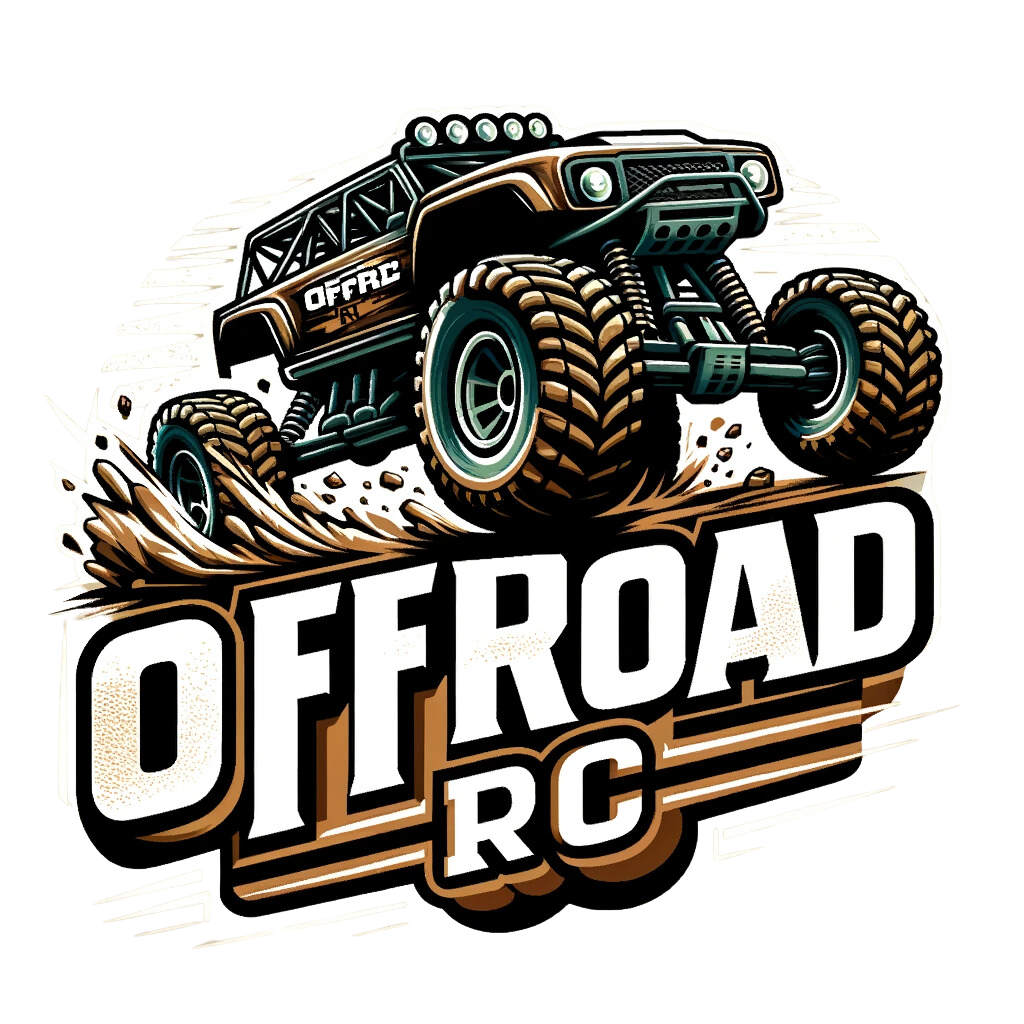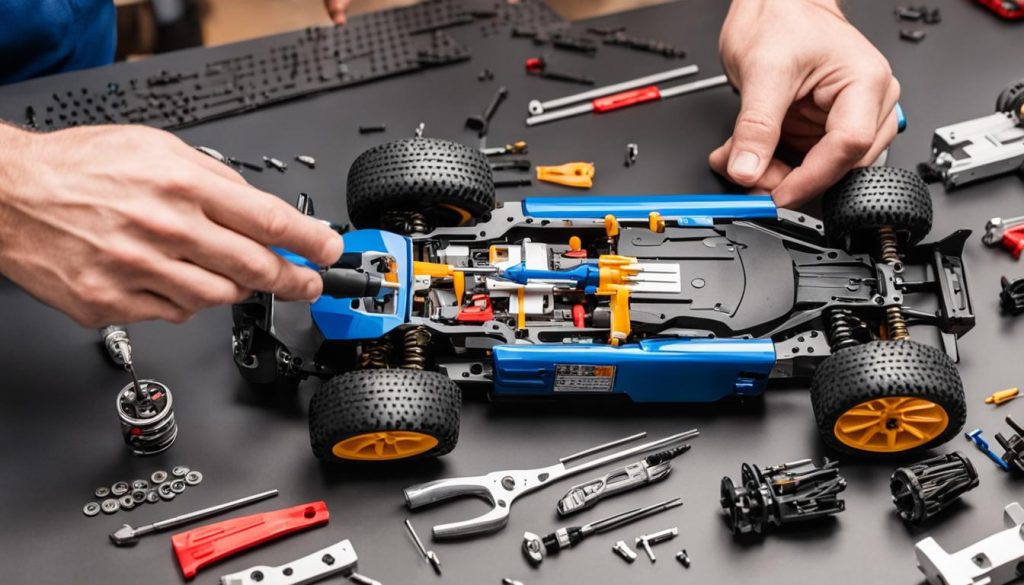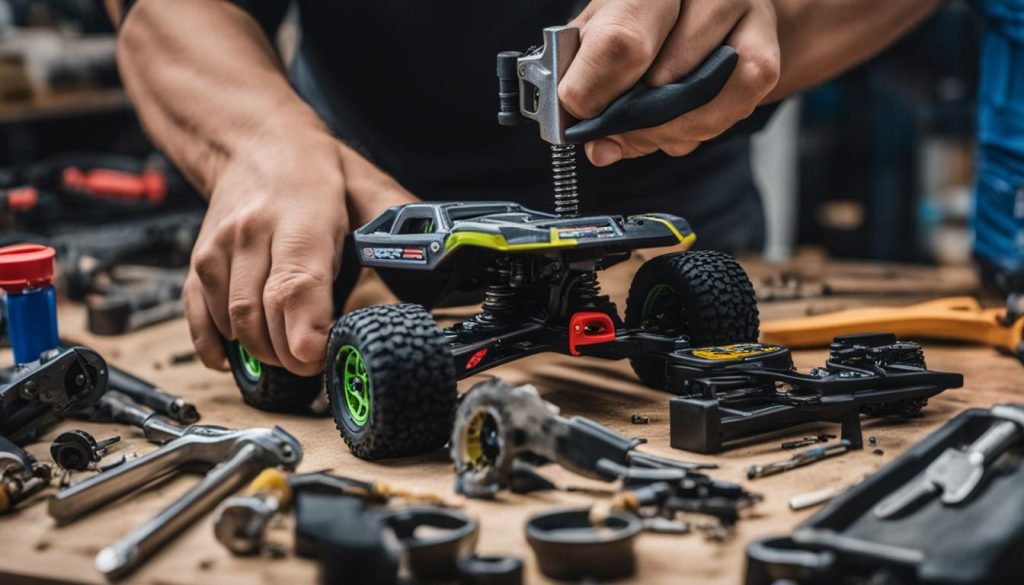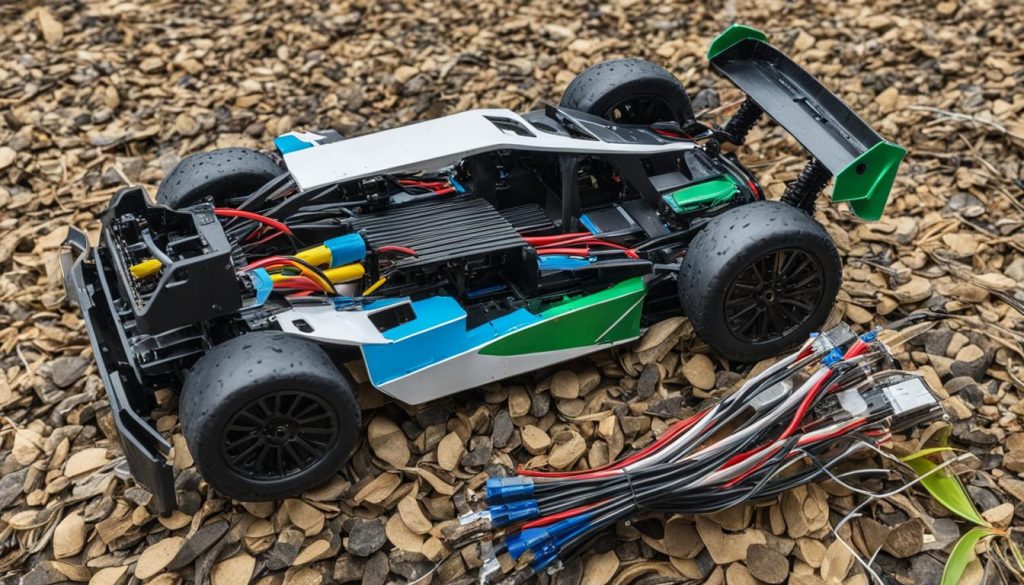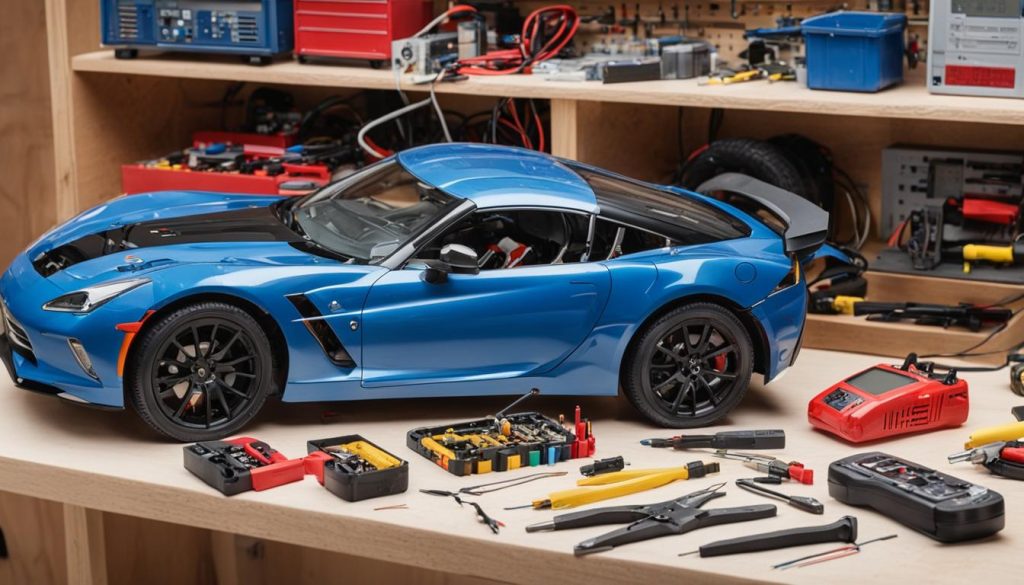Building your own RC car can be a rewarding and exciting project. Whether you’re a beginner or an experienced hobbyist, constructing your own RC car allows you to customize, learn, and experience the thrill of driving something you’ve created. In this comprehensive guide, we’ll walk you through the steps to build your own remote control car and provide valuable tips along the way.
Key Takeaways:
- Building your own RC car offers customization and a deeper understanding of how the car works.
- Consider your experience level before choosing between a factory-assembled model or building from a kit.
- Research and choose the right RC car kit based on your skills and preferences.
- Gather the necessary accessories and tools before starting the build process.
- Create a dedicated workspace with good lighting and organization for a successful build.
Are you ready to embark on an exhilarating journey of building your own RC car? Let’s explore the steps, techniques, and considerations involved in creating your very own homemade RC car. Whether you’re a seasoned hobbyist or a beginner, this guide will equip you with all the knowledge you need to successfully assemble and enjoy your dream RC car.
Buying a Factory-Assembled RC Car vs. Building From a Kit
When it comes to building your own RC car, you have two main options: buying a factory-assembled car or building from a kit. Each option offers its own advantages and considerations to keep in mind.
1. Buying a Factory-Assembled RC Car:
If you’re new to RC cars or simply prefer a ready-to-use option, buying a factory-assembled RC car might be the right choice for you. These cars, also known as Ready-to-Run (RTR) cars, are pre-built and come with all the necessary components included.
Advantages:
- Convenience: With a factory-assembled car, you don’t have to spend time assembling the vehicle, which means you can start driving it right away.
- Quick setup: RTR cars usually require minimal setup and can be ready to run within minutes.
- No additional investment: Since these cars come complete with everything you need, you don’t have to worry about purchasing additional components.
Considerations:
- Limited customization: Factory-assembled cars often have limited customization options compared to building from a kit.
- Less understanding of mechanics: You might miss out on the opportunity to gain a deeper understanding of how RC cars work if you don’t participate in the assembly process.
- Higher cost: RTR cars tend to be more expensive compared to building from a kit.
2. Building From a Kit:
If you enjoy the process of building and customizing, opting for an RC car kit allows you to have a hands-on experience in assembling your vehicle.
Advantages:
- Customization: Building from a kit gives you the freedom to customize your RC car according to your preferences, from choosing different components to adding personal touches.
- Deeper understanding: Building from a kit provides a valuable opportunity to learn and gain a deeper understanding of the mechanical aspects of RC cars.
- Cost-effectiveness: RC car kits are often more cost-effective compared to buying a factory-assembled car, as you can select components based on your budget.
Considerations:
- Additional time and effort: Building from a kit requires time and effort to assemble the car correctly. It’s important to read and follow the instructions carefully.
- Additional investment: In addition to the kit itself, you’ll need to purchase additional accessories and tools to complete the build.
Ultimately, the decision between buying a factory-assembled RC car or building from a kit depends on your personal preferences, budget, and desire for customization. Both options offer their own unique benefits and challenges, allowing you to tailor your RC car experience to suit your individual needs.
Choosing the Right RC Car Kit
When it comes to building your own RC car, choosing the right kit is crucial for a successful and enjoyable experience. Consider your experience level and the specific requirements of the kit before making a decision. Conduct thorough research on different RC car kits available in the market to find the one that best suits your skills and interests.
Start by reading the product descriptions and specifications provided by manufacturers. These descriptions will give you an idea of the complexity of the kit and whether it aligns with your capabilities. Look for online manuals and guides that provide in-depth information about the assembly process and required skills. Reviewing these resources will help you assess if a particular kit is suitable for you.
Once you have chosen a kit, gather all the necessary accessories before starting the build. This includes a radio transmitter, motor, electronic speed controller (ESC), battery, body, tires, and wheels. Following the kit’s instructions, ensure you have all the recommended accessories and purchase any additional items if needed. Pay close attention to the manufacturer’s recommendations for compatible products to ensure optimal performance.
Your RC car kit checklist:
- Radio Transmitter
- Motor
- Electronic Speed Controller (ESC)
- Battery
- Body
- Tires
- Wheels
By selecting the right RC car kit and gathering the necessary accessories, you can ensure a smooth and successful build process. Remember to take your time, follow the provided instructions, and enjoy the journey of constructing your own RC car.
| Kit Requirement | Description |
|---|---|
| Experience Level | Consider your skills and choose a kit that aligns with your experience level. Beginner kits are designed for those new to RC car building, while advanced kits offer more customization options. |
| Product Descriptions | Read the descriptions provided by manufacturers to understand the complexity and capabilities of the kit. |
| Online Manuals | Look for online manuals and guides that provide detailed instructions and insights into the assembly process. These resources can help you assess your skills and determine if a kit is suitable for you. |
| Required Accessories | Gather the necessary accessories, such as a radio transmitter, motor, ESC, battery, body, tires, and wheels, before starting the build. Follow the manufacturer’s recommendations for compatible products. |
Required Accessories and Tools for RC Car Kits
Building an RC car kit is an exciting project, but it’s important to gather all the necessary accessories and tools before starting the build. RC car kits typically do not include everything needed to run them, so you’ll need to purchase additional electronics and gather the right tools for assembly.
Required Accessories for RC Car Kits
When it comes to accessories, you’ll need to ensure you have the essential components to make your RC car fully operational. Here are the required accessories you’ll need:
- Radio Transmitter and Receiver: These enable you to control your RC car remotely.
- Servos: These are responsible for steering and throttle control.
- Motor: This provides the power to your RC car’s wheels.
- ESC (Electronic Speed Controller): It regulates the speed and direction of the motor.
- Battery: Provides the necessary power to run the RC car.
- Body: Gives your RC car its visual appearance and protects its internal components.
- Tires and Wheels: Provide traction and stability while driving.
Refer to the kit’s web page, package, or manual for specific recommendations on sizes and compatible products for these accessories.
Tools Needed to Build an RC Car Kit
Having the right tools is crucial for a smooth assembly process. Here’s a list of the essential tools you’ll need:
- Nut Drivers: Used to tighten and loosen nuts of various sizes.
- Hex Drivers: Used to secure screws with hexagonal heads.
- Curved Lexan Scissors: Ideal for cutting and shaping the RC car’s body.
- Sprue Cutters: Perfect for removing parts from plastic sprues.
- Hobby Knife: Used for precise cutting and trimming of components.
- Long Nose Pliers: Helpful for grasping and bending small parts.
With these tools at your disposal, you’ll be equipped to assemble your RC car kit successfully.

| Required Accessories | Tools |
|---|---|
| Radio Transmitter and Receiver | Nut Drivers |
| Servos | Hex Drivers |
| Motor | Curved Lexan Scissors |
| ESC (Electronic Speed Controller) | Sprue Cutters |
| Battery | Hobby Knife |
| Body | Long Nose Pliers |
| Tires and Wheels |
Setting Up a Workspace for Building an RC Car Kit
Creating a dedicated workspace is crucial for a smooth and efficient RC car kit assembly. By setting up a proper workspace, you can ensure good lighting, organize parts and tools effectively, and minimize the chances of misplacing important components.
Choosing the Right Location
Find a well-lit area where you can work on your RC car kit without interruptions. Natural light is ideal, but if that’s not possible, invest in bright LED lights that illuminate the workspace effectively. Adequate lighting is essential for accurately identifying and handling small parts and details during the assembly process.
Organizing Parts and Tools
To avoid confusion and ease the assembly process, consider using parts trays or small plastic containers with lids. These allow you to separate and label different components, ensuring easy access and quick identification when needed. With organized parts, you can streamline the build and keep track of everything more efficiently.
Additionally, designate specific areas or shelves for storing tools such as nut drivers, hex drivers, curved Lexan scissors, sprue cutters, a hobby knife, and long-nose pliers. Having your tools readily accessible and in order will save you time and effort, making the building process more enjoyable.
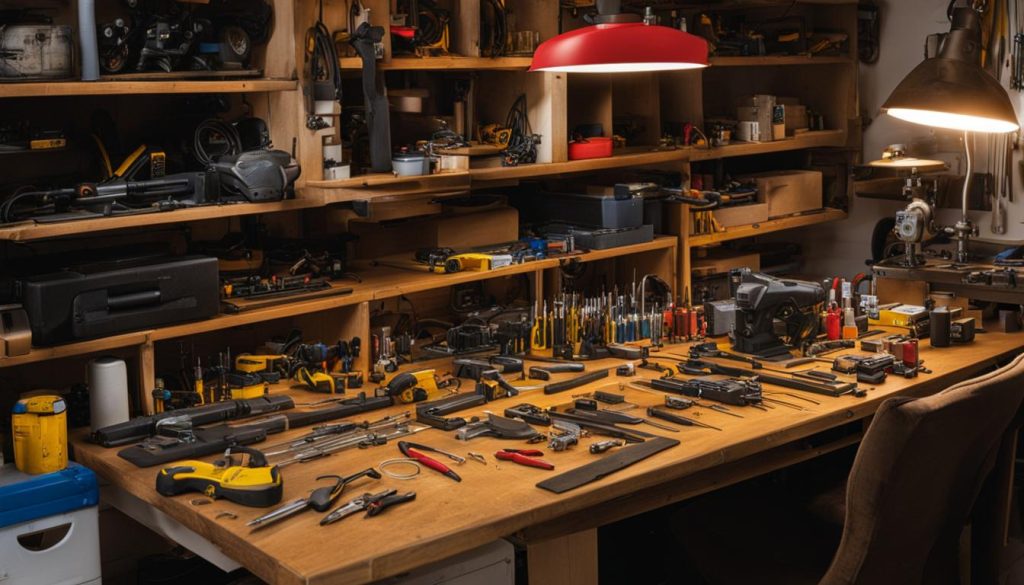
Creating a Clean and Tidy Workspace
Maintaining a clean workspace is essential for a clutter-free and focused building experience. Clear any unnecessary items from your work area to reduce distractions and create a dedicated space solely for RC car kit assembly.
Use cable ties or cord management solutions to keep wires organized and prevent tangling. This ensures a neater workspace and reduces the risk of damaging delicate components due to tangled cords.
Minimizing Distractions
Building an RC car kit requires concentration and attention to detail. Minimize distractions by informing others around you of your dedicated assembly time and asking for uninterrupted privacy during the build. This will allow you to focus entirely on the task at hand and complete the construction more efficiently.
Tips for Building an RC Car Kit
Building an RC car kit requires patience and attention to detail. Follow these tips to create a well-assembled RC car:
- Gather all the required parts and hardware: Before starting each step, make sure you have all the necessary components for the build. Double-check the labeled parts bags against the manual to ensure you have the correct parts for each step.
- Pay attention to the illustrations: The manual will include illustrations to guide you through the assembly process. Pay close attention to these illustrations to ensure you’re using the right size screws, nuts, and other parts.
- Understand the meaning of symbols: The manual may use symbols to represent specific actions or instructions. Take the time to understand the meaning of these symbols to avoid any confusion during assembly.
- Focus on one step at a time: Building an RC car kit can be a complex process. To avoid mistakes, focus on one step at a time. Complete each step before moving on to the next.
- Keep parts organized: Organize the parts and hardware in a systematic way to avoid using the wrong part. Use parts trays or small plastic containers with lids to keep everything organized and easily accessible.
“Building an RC car kit requires patience and attention to detail.”
By following these tips for building an RC car kit, you’ll ensure a smooth assembly process and a well-assembled RC car.
Building an RC Car from Scratch
Building an RC car from scratch is an advanced undertaking that requires a higher level of technical skills and knowledge. If you’re up for the challenge, here are the key steps and considerations to keep in mind:
1. Choosing the Right Materials
When building an RC car from scratch, selecting the right materials is crucial for durability and performance. Opt for lightweight yet strong materials for the chassis, such as carbon fiber or aluminum alloy. These materials offer the necessary strength while keeping the overall weight of the car low, improving its speed and maneuverability.
2. Selecting Wheels and Tires
Proper wheels and tires are essential for optimal traction and handling. Consider the terrain where you’ll be driving your RC car and choose wheels and tires accordingly. Off-road tires with deep treads are great for rough surfaces, while slick tires are suitable for smooth track racing.
3. Assembling Steering and Motor Components
The steering and motor components are critical for controlling your RC car. Familiarize yourself with the principles of steering mechanisms and choose high-quality servos and motors that align with your performance goals. Proper assembly and adjustment of these components are essential for precise control and maneuverability.
4. Basic Electronics and Programming
Building an RC car from scratch may require basic knowledge of electronics and programming. Understanding the fundamentals of circuits, soldering, and programming microcontrollers will be beneficial in customizing your vehicle’s features and functionalities.
Techniques for Building an RC Car
Building an RC car involves a combination of electronics understanding, mechanical skills, and attention to detail. To create a functional RC vehicle, it’s important to grasp the basics of electronics and programming. You’ll need to familiarize yourself with different components such as motors, servos, and batteries, and understand how they work together.
When it comes to mechanical skills, assembling and adjusting the chassis and suspension system are key aspects of building an RC car. Paying attention to small details and ensuring precise construction is crucial for optimal performance.
Continuous learning and practice will refine your techniques in building RC cars. Keep up with advancements in electronics and mechanical engineering to stay updated on the latest techniques and technologies. Don’t be afraid to experiment and try new approaches to improve your skills.
Remember, building an RC car is not only a hobby but also an opportunity to enhance your knowledge in electronics and mechanics. Embrace the learning process and enjoy the satisfaction of constructing your own RC car from scratch or a kit.
Key Techniques for Building an RC Car:
- Understand the basic principles of electronics and programming.
- Familiarize yourself with different components such as motors, servos, and batteries.
- Assemble and adjust the chassis and suspension system with precision.
- Pay attention to small details and ensure accurate construction.
- Continuously learn and practice to refine your building techniques.
- Stay updated on advancements in electronics and mechanical engineering.
- Experiment with new approaches to enhance your skills.
Conclusion
Building your own RC car can provide a truly rewarding and enjoyable experience. Whether you choose to build from a kit or start from scratch, you’ll have the opportunity to customize your car to your exact preferences, gain a deep understanding of its mechanics, and create a truly unique vehicle.
To ensure a successful build, it’s crucial to invest time in researching and gathering the necessary materials, accessories, and tools. Setting up a dedicated workspace with proper lighting and organization will also contribute to a smooth and efficient building process.
By building an RC car, you not only unleash your creativity but also develop valuable skills and knowledge along the way. From electronics and programming to mechanical assembly, you’ll broaden your capabilities and enhance your understanding of how things work. The satisfaction of driving something you’ve built with your own hands is immeasurable.
In conclusion, building your own RC car is a fantastic way to explore your passion for remote control vehicles while experiencing the joy of creating something unique. The journey may have its challenges, but the benefits of customization, knowledge gain, and personal satisfaction make it all worthwhile.
FAQ
Can I build my own RC car?
Yes, you can build your own RC car. There are different options available, including buying a factory-assembled model or building from a kit.
What are the advantages of building your own RC car?
Building your own RC car allows for customization and a deeper understanding of the car’s mechanics. It also offers the opportunity to create a unique vehicle.
Is it cheaper to build an RC car from a kit?
RC car kits are often less expensive than ready-to-run (RTR) cars. However, additional time and investment are required for accessories and assembly.
How do I choose the right RC car kit?
Consider your experience level and research the specific kit’s requirements. Look for online manuals and product descriptions to assess your skills and determine if it’s a suitable kit for you.
What accessories do I need to build an RC car kit?
In addition to the kit, you’ll need accessories such as a radio transmitter, receiver, servos, motor, ESC, battery, body, tires, and wheels. Consult the kit’s recommendations for compatible products.
What tools do I need to build an RC car kit?
You may need tools such as nut drivers, hex drivers, curved Lexan scissors, sprue cutters, hobby knife, and long nose pliers. Refer to the kit’s manual for specific tool requirements.
How should I set up a workspace for building an RC car kit?
Choose a well-lit area with good lighting. Consider organizing parts using parts trays or small plastic containers. Keep the workspace clean and organized to prevent misplacing parts.
Any tips for building an RC car kit?
Before starting each step, gather all the required parts and hardware. Pay attention to the instructions, compare labeled parts bags with the manual, and focus on one step at a time. Keep parts organized to avoid using the wrong part.
Is it possible to build an RC car from scratch?
Yes, it is possible to build an RC car from scratch. However, it requires more technical skills and knowledge in areas such as choosing materials, selecting components, and understanding electronics and programming.
What techniques are important for building an RC car?
Understanding electronics and basic programming concepts is important for building an RC car. Basic mechanical skills, attention to detail, and the ability to follow instructions are also necessary for a successful build.
